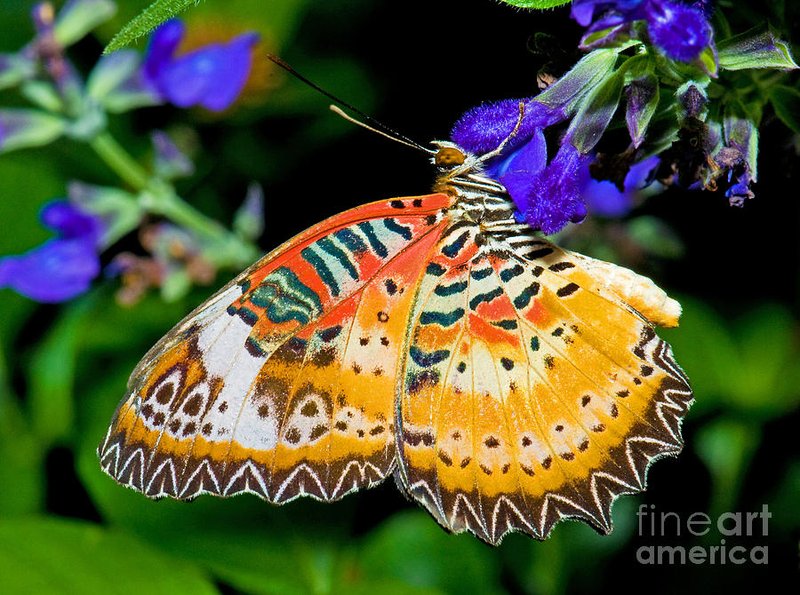
You’ve probably heard the saying, “Don’t judge a book by its cover.” That’s a perfect way to think about lacewings. At first glance, they might seem like just another insect buzzing around your garden, but there’s so much more to these fascinating creatures. Lacewings belong to the family Chrysopidae and are known for their delicate, lace-like wings that sparkle in the sunlight. But their beauty is just the tip of the iceberg!
Lacewings have become quite the subject of curiosity, especially among gardeners and nature enthusiasts. These tiny insects play a vital role in controlling pest populations. So, if you’re wondering whether to welcome them into your yard or shoo them away, you might want to stick around and learn a bit more about their life cycle, habits, and benefits.
What are Lacewings?
Lacewings are soft-bodied insects that typically have a striking green or brown hue, and they can be found almost anywhere—gardens, forests, or even your backyard. They usually measure anywhere from 1 inch to 1.5 inches in length. But don’t let their size fool you; their presence can be incredibly beneficial to your garden ecosystem.
One of the coolest aspects of lacewings is their lifecycle, which consists of four main stages: egg, larva, pupa, and adult. Each stage has its own unique traits and roles in the environment. The larvae, for instance, are voracious predators of aphids and other pests, making them a gardener’s best friend.
Many people are surprised to learn that lacewings are not just winged beauties; they also contribute significantly to the ecological balance. Understanding their role can help you appreciate the hidden beauty in your garden and keep those pesky pests at bay!
Lacewing Lifecycle
The lifecycle of a lacewing is nothing short of fascinating. It starts with the female laying her eggs, typically on the undersides of leaves to protect them from predators. These eggs are tiny, often resembling little green bulbs. After about three to ten days, the eggs hatch into larvae. These little creatures are often referred to as “aphid lions” due to their fierce appetite for aphids and other soft-bodied insects.
As larvae, lacewings can be quite alarming to those unfamiliar with them. They can grow quite large and have a rather menacing appearance, complete with large mandibles used for capturing prey. They’ll feast on aphids, thrips, and spider mites, consuming dozens of them daily, which makes them invaluable for natural pest control.
After the larval stage, which lasts about two to three weeks, lacewings enter a pupal stage, where they undergo metamorphosis. This stage can last anywhere from a few days to a couple of weeks. Finally, adult lacewings emerge, ready to start the cycle all over again. Isn’t nature incredible?
Key Characteristics of Lacewings
| Size: | 1-1.5 inches in length |
| Color: | Green or brown |
| Wings: | Lace-like and transparent |
| Habitat: | Gardens, forests, grassy areas |
| Diet: | Aphids, thrips, spider mites |
| Lifespan: | Several weeks to a few months |
Why Lacewings Matter
If you’re a gardener, lacewings should be on your radar! These little guys are natural pest controllers, meaning they can help keep aphid populations in check without the need for chemical pesticides. This is fantastic news for anyone who’s conscious about the environment. By encouraging lacewings in your garden, you create a healthier ecosystem!
Also, lacewings can be a natural indicator of the health of your garden. If you have a thriving lacewing population, it usually means you have a balanced ecosystem that is capable of maintaining its pest levels. When you see lacewings fluttering around, you can take comfort in knowing that they’re doing their part to keep the garden thriving.
Furthermore, lacewing larvae have been used in biological control programs for managing pests on crop farms. This represents a sustainable approach that can help reduce reliance on harmful pesticides, making lacewings not just beautiful but also incredibly important in agriculture.
Lacewing Species
There are over 2,000 species of lacewings worldwide, each adapted to its specific environment. In North America, some of the common species include the Green Lacewing (Chrysopa carnea) and the Brown Lacewing (Hemerobius spp.). Each species has unique traits, but they all share that characteristic lace-like wing structure.
The Green Lacewing is particularly popular among gardeners because they are excellent at controlling pest populations. They have delicate green bodies and wings that can appear iridescent under the right light. The Brown Lacewing, in contrast, is usually more muted in color but fascinating in its own right, often preferring shaded areas.
Each species of lacewing plays a role in its ecosystem. Some are better suited for urban gardens while others thrive in wild areas. It’s always interesting to see how these insects adapt to their environments in the quest for survival!
How to Attract Lacewings to Your Garden
If you want to bring lacewings into your yard, there are several simple steps you can take. First, consider planting a variety of nectar-producing flowers. Lacewings are often attracted to gardens with flowering plants like dill, fennel, or yarrow. These plants not only beautify your space but also provide food sources for lacewing adults.
Another effective method for attracting lacewings is to avoid using pesticides in your garden. While it might seem tempting to eliminate all insects, remember that lacewings need a healthy environment to thrive. Opt for organic pest control methods instead, which can help keep your garden balanced.
Additionally, providing shelter can encourage lacewings to stick around. You can do this by leaving some areas of native plants or even installing insect hotels to offer a cozy spot for them to rest. Every bit of effort counts in creating an inviting atmosphere for these beneficial insects.
Common Misconceptions About Lacewings
Many people have misconceptions about lacewings, thinking they are pests themselves. In reality, lacewings are gentle and pose no threat to humans. Instead, they should be viewed as allies in gardening efforts. Their larvae, often mistaken for threats, are actually helpful in controlling pest populations.
Another common myth is that lacewings only thrive in pristine environments free of other insects. In fact, lacewings can adapt to various conditions and can thrive in environments with other insect populations. They are versatile creatures that play a dynamic role in the ecosystem.
It’s essential to educate others about these beneficial insects so they’re welcomed into gardens and not seen as nuisances. By spreading the word, you can help promote a healthier balance in nature and maximize the benefits of having lacewings around.
Conservation of Lacewings
Just like many species, lacewings face challenges due to habitat destruction and pesticide use. Conserving their populations is crucial for maintaining ecological balance. One way to support lacewing conservation is by creating habitats that encourage their presence, as mentioned earlier with native plants and organic practices.
Additionally, community awareness can go a long way. Encourage your neighbors to be mindful of their gardening practices and to appreciate the role of lacewings in pest control. Together, communities can create environments that favor these important insects.
Lastly, consider supporting local conservation efforts aimed at preserving natural habitats where lacewings and similar species can thrive. Every little action can contribute to the overall well-being of our environment.
FAQ
What do lacewing larvae eat?
Lacewing larvae are known for their voracious appetite, primarily feeding on soft-bodied insects like aphids, thrips, and spider mites. These insects are known pests in many gardens, so lacewing larvae act as natural pest controllers. A single lacewing larva can consume dozens of aphids in a day, making them crucial allies for gardeners.
Are lacewings harmful to humans?
No, lacewings are completely harmless to humans. They don’t sting or bite, and their primary focus is on consuming pests. In fact, they are beneficial insects that help maintain the balance of ecosystems by keeping pest populations in check.
What habitat do lacewings prefer?
Lacewings thrive in diverse habitats, including gardens, forests, fields, and grassy areas. They prefer environments rich in flowering plants, which provide nectar for adults and habitat for their larvae. A well-maintained garden can easily attract lacewings.
What time of year are lacewings most active?
Lacewings tend to be most active during the warmer months, from spring to early fall. This time frame aligns with their lifecycle stages, as adults emerge in spring to mate and lay eggs for the next generation. During this period, they are actively feeding and contributing to pest control.
How can I identify a lacewing?
Lacewings are typically identifiable by their delicate, lace-like wings and soft bodies. Their wings are transparent and can have a green or brown hue. Adults often measure about 1 inch long, and you may find them fluttering around gardens during warmer months, especially at dusk.
Can I buy lacewings for my garden?
Yes, many gardeners choose to purchase lacewing eggs or larvae to release in their gardens. This can be an effective method for naturally controlling pest populations. When buying lacewings, ensure that you obtain them from reputable suppliers to guarantee they are healthy and suitable for your garden.
How long do lacewings live?
The lifespan of lacewings varies, but adults can live for several weeks to a few months, depending on environmental conditions and food availability. The lifecycle from egg to adult typically takes from a few weeks to a couple of months, with each stage playing a critical role in their lifespan.
Do lacewings need specific plants in the garden?
Lacewings are attracted to a variety of flowering plants that provide nectar and pollen for adults. Plants such as dill, fennel, and yarrow are excellent choices. Providing these food sources, alongside diverse vegetation, will help sustain lacewing populations in your garden.
Are lacewing larvae different from adults?
Yes, lacewing larvae and adults are quite different. Larvae, often called “aphid lions,” have a more robust and often more intimidating appearance. They are designed for predation, while adult lacewings are more delicate, with wings that enable them to fly and search for food sources. Each stage has its unique characteristics and roles in the environment.
How do lacewings contribute to the ecosystem?
Lacewings play a vital role in maintaining the ecological balance within various habitats. By controlling populations of harmful pests like aphids, they help promote plant health in gardens and agricultural settings. Their presence encourages biodiversity, making them essential players in a thriving ecosystem.

